Shaggy mountain cows
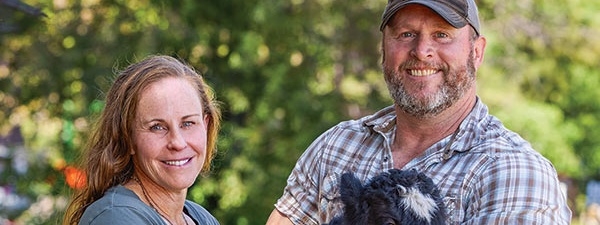
Winter 2025 California Bountiful magazine
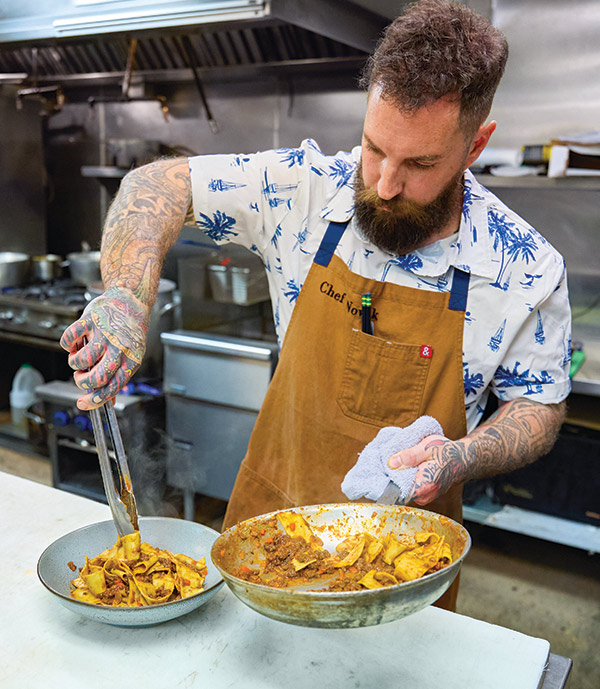
Ranchers and chef praise attributes of alpine yaks
Story by Linda DuBois
Photos by Fred Greaves
Diners at Sunnyside Restaurant & Lodge in Tahoe City who sample the popular bolognaise on the winter-season menu may be getting their very first taste of its main ingredient.
When Executive Chef Christian Novak and his team make this dish, instead of using traditional ground beef or pork, they use meat from domesticated yaks descended from shaggy bovines native to the Himalayan mountains.
While foreign to many of Sunnyside’s diners, this dark-red lean meat is approachable, often compared to grass-fed cattle or bison.
“Yaks have a very similar flavor profile to cows,” Novak says. “The ground yak we use for the bolognaise would be great for burgers, koftas (Asian or North African meatballs) or sausages. We’ve made chili out of it and it’s delicious. So, it’s very versatile,” he says.
“It’s a really beautiful meat,” he adds. “It breaks up nicely as we’re cooking it, it browns well, it’s juicy and tender, and it has a rich, sort of meaty flavor to it.”

Experimental chef
Novak enjoys trying new things, having been exposed to a variety of cuisines over the years. Originally from the small English village of Wall Heath, Novak grew up in a family who loved to cook, and he later worked as a chef throughout England and in the French and Swiss Alps.
After moving to the United States in 2016, he cooked in Southern California, San Francisco and South Lake Tahoe before joining Sunnyside about three years ago.
He was seeking locally sourced meat “that might be a little bit different” when his bar manager told him about Sierra Valley Yaks in Calpine. Then, when his sous chef expressed interest in introducing a pasta dish to the winter menu, Novak figured yak bolognaise would be “a pretty easy, classic way to get it on the menu, and people might take the risk to try it,” he says.
He based the recipe on his mother’s bolognaise, with a few tweaks. “It’s come out really well. It sells like wildfire. It’s probably the third or fourth most popular dish on the menu,” Novak says.
Novak also enjoys sharing the story of the nearby ranch that raises the yaks. “It’s listed on the menu as ‘Sierra Valley Yaks Bolognaise’ and I’d definitely say it piques some interest. Not everyone knows what a yak is,” Novak says.
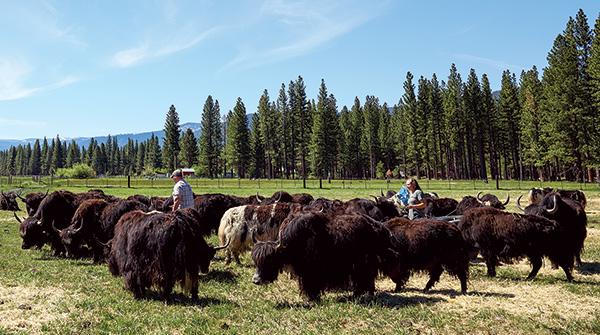
Raising high-mountain bovines
Sierra Valley Yaks owners Greg and Jenna Gatto also knew very little about the animals before they started raising them.
Greg had owned a small herd of beef cattle for about 20 years. After moving to the Sierra Valley (where he met Jenna), he would keep the herd in the mountains during the summer but move them to the valley for winter.
“I thought it would be really nice to have something here year-round,” Greg says. So, he started thinking about animals that would do well in a high elevation.
“So, I just kind of threw the idea of yaks out there to Jenna and she said, ‘What’s a yak?’”
Jenna chuckles, recalling her reaction. “I was generally aware of what a yak was but not aware that they were in the United States. I thought they were exclusively Himalayan animals,” she says.
Greg would soon find out how seriously Jenna took his suggestion.
“She had gone online and contacted a yak breeder and the next thing I know she said, ‘Well, I found some yaks. We’re going to get them. And I said, ‘Well, wait a second. I was just kidding.’ She said, ‘Too late. The yaks are ready to go.’”
That was about nine years ago. They started with 11 from Idaho and later added another 11 from Montana and built their herd of 165 from those. Now, they’re rotating four bulls that breed with about 70 cows.
Besides meat, yaks also produce good milk, high in fat and protein, which the Gattos regularly consume at home. They hope to eventually break into the dairy business, but because they both have full-time jobs outside of the ranch, they haven’t found time to work through the red tape required to get that started.
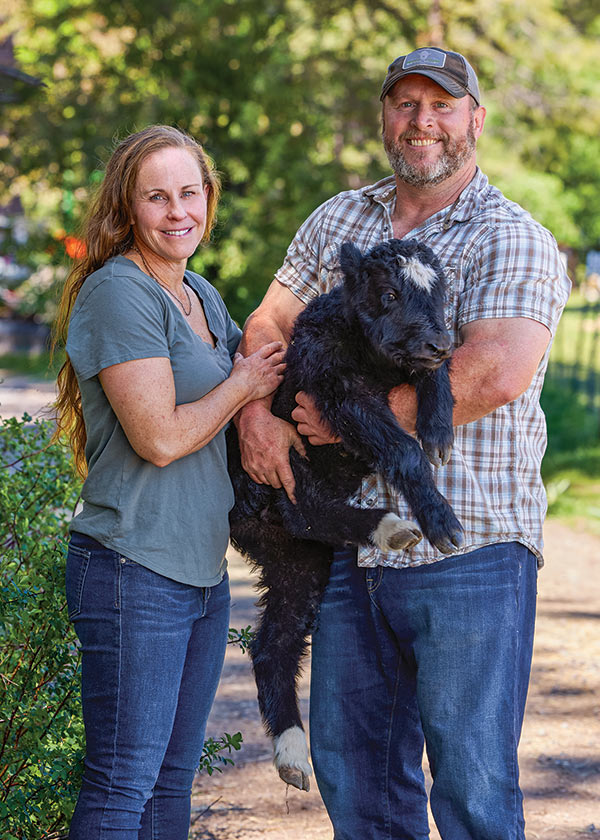
‘Grunting ox’
Descended from the larger wild yak (Bos mutus), the domestic yak is named Bos grunniens, which means “grunting ox.”
“Yaks grunt rather than moo,” Greg says. “So, they sound almost like pigs.”
Domestic yaks are similar to cows, with a few distinctions. The females, especially, are much smaller than typical cows.
“They look a lot like Highland cattle. We call them shaggy mountain cows,” Greg says. The horned animals have a long coat with outer protective hair and a thick undercoat that grows during the winter. Then they naturally shed during warm months.
Mostly docile and friendly, their yaks often will approach the Gattos and eat treats out of their hands.
“We have one who’s aptly named Princess. She’ll roll over on her back for belly scratches,” Greg says. “We have a couple that have been bottle babies and they follow you around like puppy dogs and when you’re in the field, they’ll try to nuzzle up against you—and sometimes they forget they have horns, so you have to remind them sometimes.”
However, if something spooks them, they can stampede or jump fences. They don’t respond to trained herding dogs, so the Gattos lure them with treats. They’ll also wander if they get the chance.
“We had a couple on our front porch last winter because there was so much snow, the fences were buried,” Jenna says.
The Gattos feed the yaks hay in the winter but in warmer months they thrive off the native pasture of mostly grasses and sedges with a little added clover for protein. The Gattos also supplement their diets with copper, a nutrient yaks need in high quantities.
“They’re not very picky eaters,” Greg says. “They’ll browse more than cattle do but not quite to the extent of goats.”
Due to the rough terrain of their native environment, yaks have fast-growing hooves, which need to be regularly trimmed when not worn down on the softer soil of California’s mountains. They also regulate their body temperature through their hooves, often standing in shallow water to cool themselves off in the summer.
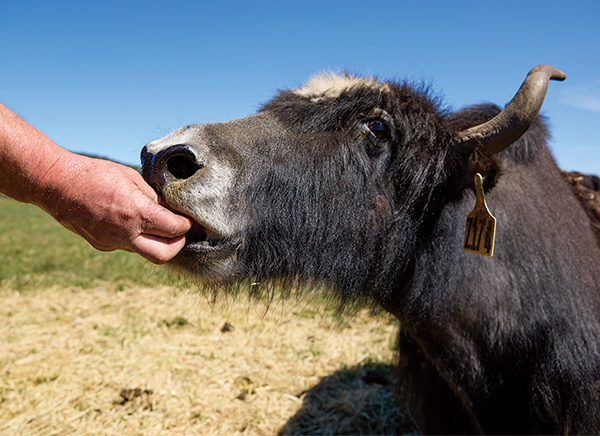
Amazing animals
After several years of raising yaks, the Gattos say the animals still intrigue them.
“For lack of a better word, they’re really cool animals,” Jenna says. “My having not really known anything about them and now nine years into this, I’m in awe of how amazing they are in terms of hardiness and temperament, their intelligence and fierceness—in a good way.”
Greg adds that there’s an “almost prehistoric aura” that yaks give off.
“We have been able to make quite a few friends with the local Tibetan community. They’ll come up and visit and leave their prayer flags. The reverence that they give these animals is really something to behold. In their home country, the animals are everything: their food, their fiber and they burn their dung for fuel. You can see how much they mean to them and you really appreciate that kind of symbiosis that humans can have with animals.”
Yak yarn is warmer than sheep wool, softer than cashmere
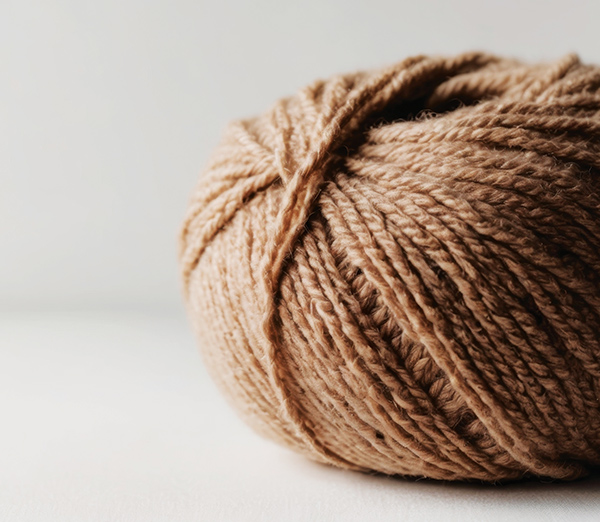
As an avid knitter and crocheter, Donatella Scabini appreciates all different types of yarn for their individual qualities, but she’s an especially big fan of yak wool.
The yarn made with the shaggy bovines’ hair is “even warmer than merino wool and even softer than cashmere,” she says, adding that it’s also less expensive, more breathable and pills less than cashmere and, unlike wool, doesn’t have an odor or feel scratchy on the skin.
“I think it’s just wonderful. It’s a beautiful yarn and fun to work with,” she says.
She uses it to make sweaters, cardigans, blankets, throws, scarves, shawls, hats and gloves. Many of her creations she wears herself but also gives many away.
An El Cerrito resident who has a vacation home in Plumas County’s Gold Mountain, Scabini is one of the best customers of the fiber sold by Sierra Valley Yaks in Calpine.
While ranch owners Greg and Jenna Gatto raise their yaks primarily for meat, they also process and sell about 40 pounds of yak fiber per year. The fiber is short so the Gattos mix in 20% merino wool so the yarn will hold together when artisans start working with it.
“We don’t sheer them like you would with sheep because you want them to keep their guard hair that protects them from the sun in the summer,” Greg Gatto says.
Instead, they use alpaca combs to collect the animals’ undercoats as they naturally shed in the spring and summer.
“It can be a pretty time-consuming process,” he adds. “While they don’t give a lot of fiber, what they do give is very, very high quality.”
- Yak bolognaise
-
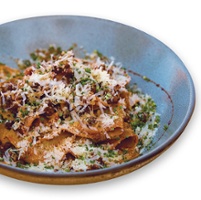
-
Christian Novak, executive chef of Sunnyside Restaurant & Lodge in Tahoe City, based this recipe on his mother’s bolognaise. He typically serves it with pappardelle.

